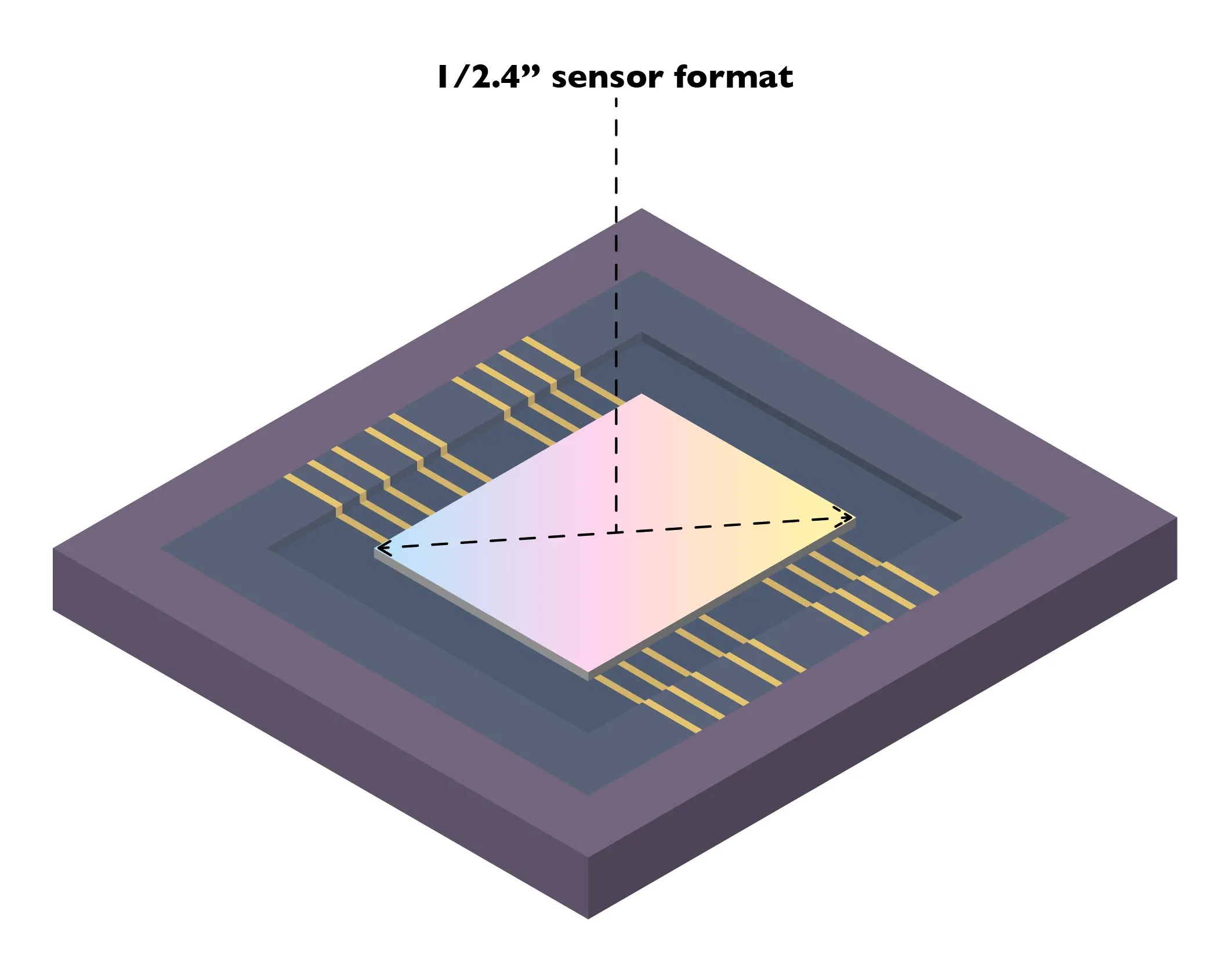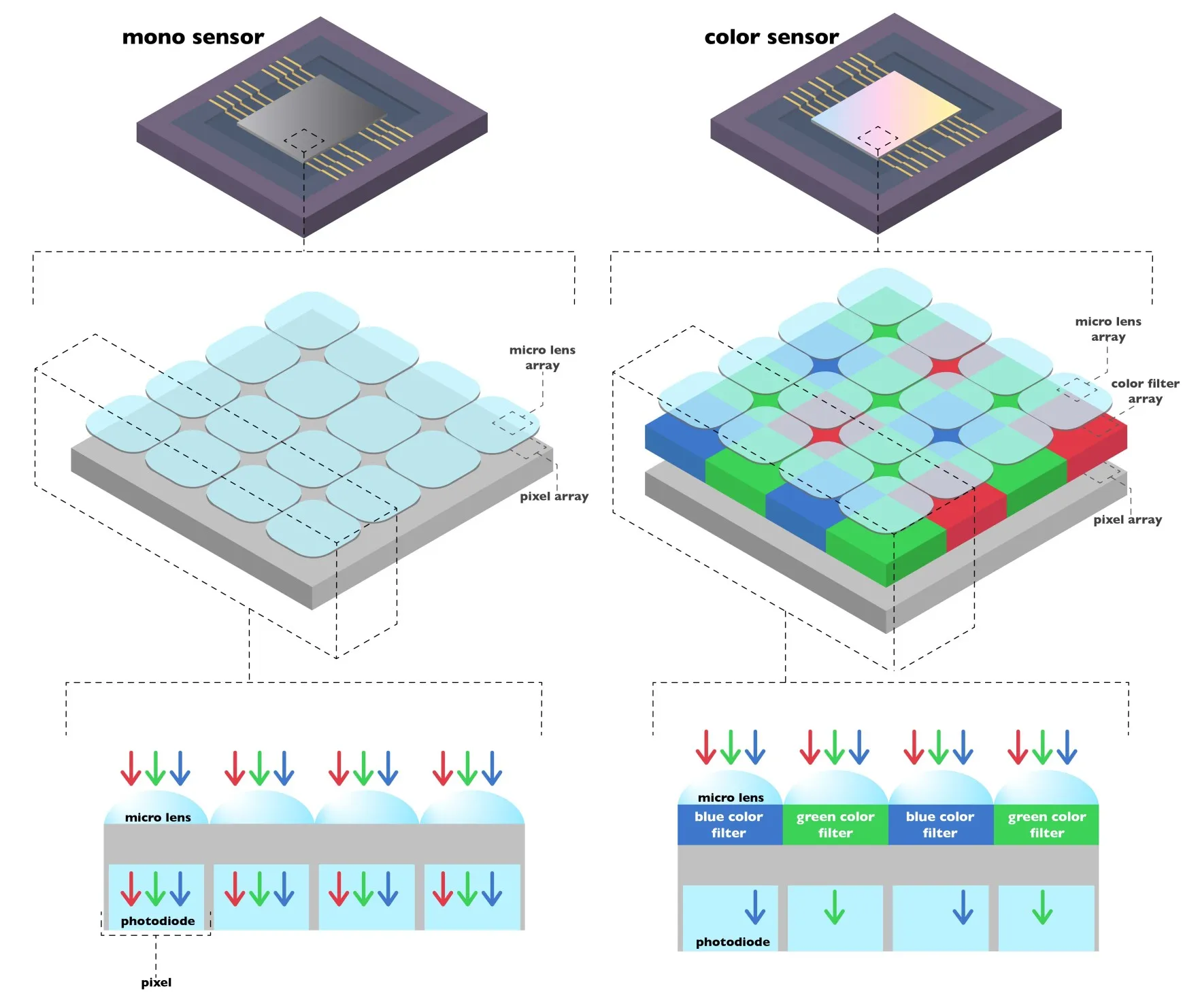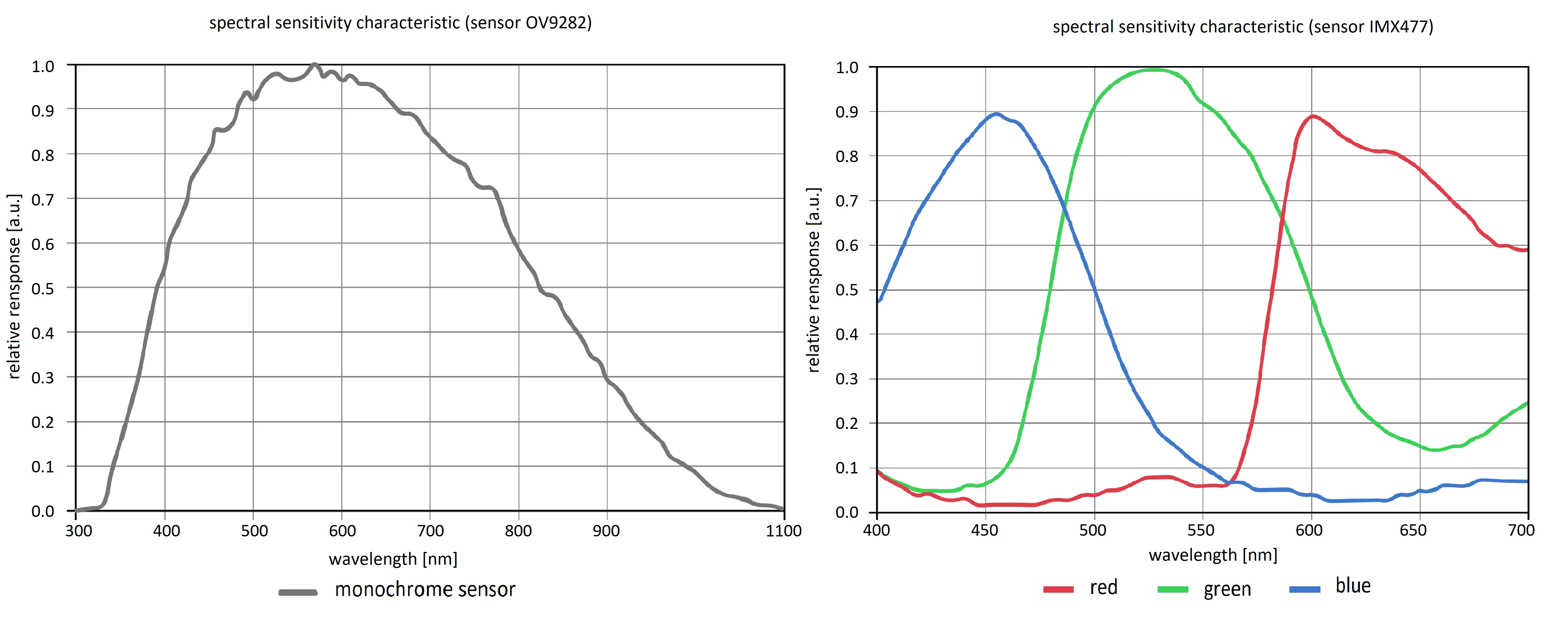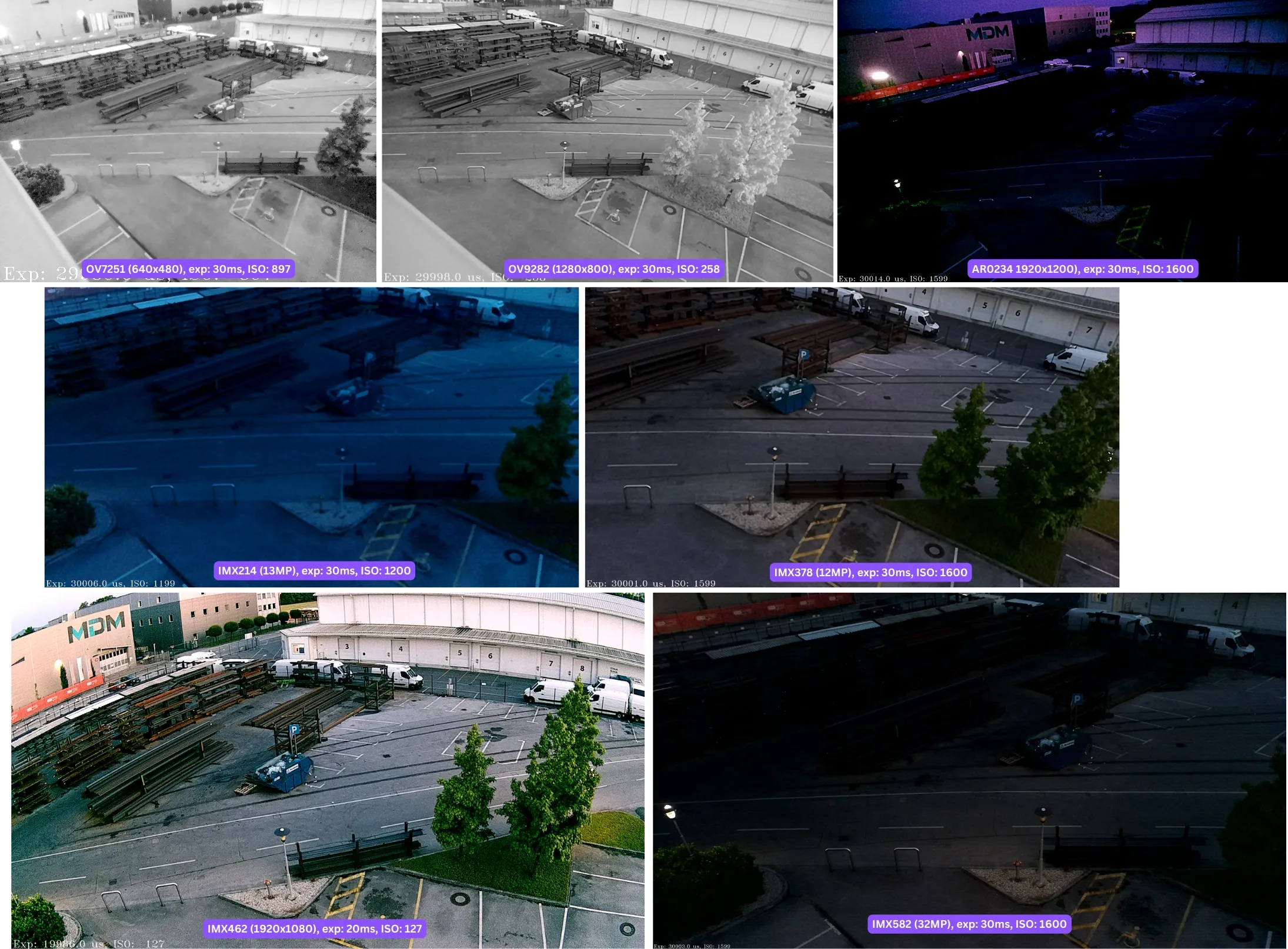Supported sensors
| Name | Resolution | Sensor Type | Size | Max FPS | RVC2 support | RVC4 support |
|---|---|---|---|---|---|---|
| IMX378 | 4056x3040 | color | 1/2.3" (11.0 mm) | 85 (@ 2024×1520) | ✅ | ❌ |
| OV9282 | 1280x800 | mono | 1/4" (6.3 mm) | 255 (@ 640x400) | ✅ | ✅ |
| IMX214 | 4208x3120 | color | 1/3.06" (8.3 mm) | 35 (@ 1920x1080) | ✅ | ❌ |
| OV7251 | 640x480 | mono | 1/7.5" (3.4 mm) | 117 (@ 640x400) | ✅ | ❌ |
| IMX477 | 4056x3040 | color | 1/2.3" (11.0 mm) | 60 (@ 1920x1080) | ✅ | ❌ |
| OV9782 | 1280x800 | color | 1/4" (6.3 mm) | 143 (@ 1280x720) | ✅ | ✅ |
| AR0234 | 1920x1200 | color | 1/2.6" (9.8 mm) | 60 (@ 1920x1200) | ✅ | ✅ |
| IMX582 | 5312x6000 | color | 1/2" (12.7 mm) | 42 (@ 3840x2160) | ✅ | ✅ |
| IMX462 | 1920x1080 | color | 1/2.8" (9.1 mm) | 30 (@ 1920x1080) | ✅ | ❌ |
| IMX577 | 4056x3040 | color | 1/2.3" (11.0 mm) | 60 (@ 1920x1080) | ✅ | ❌ |
| IMX586 | 8000x6000 | color | 1/2" (12.7 mm) | 480 (@ 1280x720) | ❌ | ✅ |
| 33D | 640x480 | tof | 1/3.2" (7.9 mm) | 80 (@ 640x480) | ✅ | ❌ |
| TINY1C | 256x192 | thermal | 1/3" (8.5 mm) | 25 (@ 256x192) | ✅ | ❌ |
| MIRA220 | 1600x1400 | mono | 1/2.27" (11.2 mm) | 30 (@ 1600x1400) | ❌ | ✅ |
| OG05B10 | 2592x1944 | color | 1/2.53" (10.0 mm) | 90 (@ 1920x1080) | ❌ | ✅ |
| IMX708 | 4608x2592 | color | 1/2.43" (10.5 mm) | 30 (@ 1920x1080) | ✅ | ❌ |
Other sensors
| Sensor | Status | Shutter | Resolution |
|---|---|---|---|
| IMX334 | Not tested | rolling | 3840x2160 |
| IMX390 | Not tested | rolling | 1937x1217 |
| IMX412 | Not tested | rolling | 4056x3040 |
| SC2232H | Not tested | rolling | 1936x1086 |
| OV2735 | Not tested | rolling | 1920x1080 |
| SC5335 | Not tested | rolling | 2592x1944 |
| SC8238 | Not tested | rolling | 3840x2160 |
Camera characteristics
Sensor size
Sensor size is the length of the diagonal of the sensor. The larger sensors can capture more light and can consequently produce better image quality: better low light performance and higher resolution.

Mono(chrome) and color sensor

Comparison of the spectral sensitivity of mono and color sensors
 The relative response refers to the relative spectral sensitivity of the sensor at different wavelengths, normalized to the wavelength at which the sensor has the highest sensitivity.Quantum efficiency is a measure of how well a sensor converts incoming photons into electrons. The quantum efficiency of a monochrome sensor is higher compared to that of a color sensor because the color filter array present in the color sensor reduces the amount of light reaching the photodetectors.Mono sensors can reach the maximal quantum efficiency of around 80%, while color sensors can have maximal quantum efficiency of around 40%.
The relative response refers to the relative spectral sensitivity of the sensor at different wavelengths, normalized to the wavelength at which the sensor has the highest sensitivity.Quantum efficiency is a measure of how well a sensor converts incoming photons into electrons. The quantum efficiency of a monochrome sensor is higher compared to that of a color sensor because the color filter array present in the color sensor reduces the amount of light reaching the photodetectors.Mono sensors can reach the maximal quantum efficiency of around 80%, while color sensors can have maximal quantum efficiency of around 40%.Low light performcance
Low light performance
 You can view full images on You can view full images on gdrive here.
You can view full images on You can view full images on gdrive here.